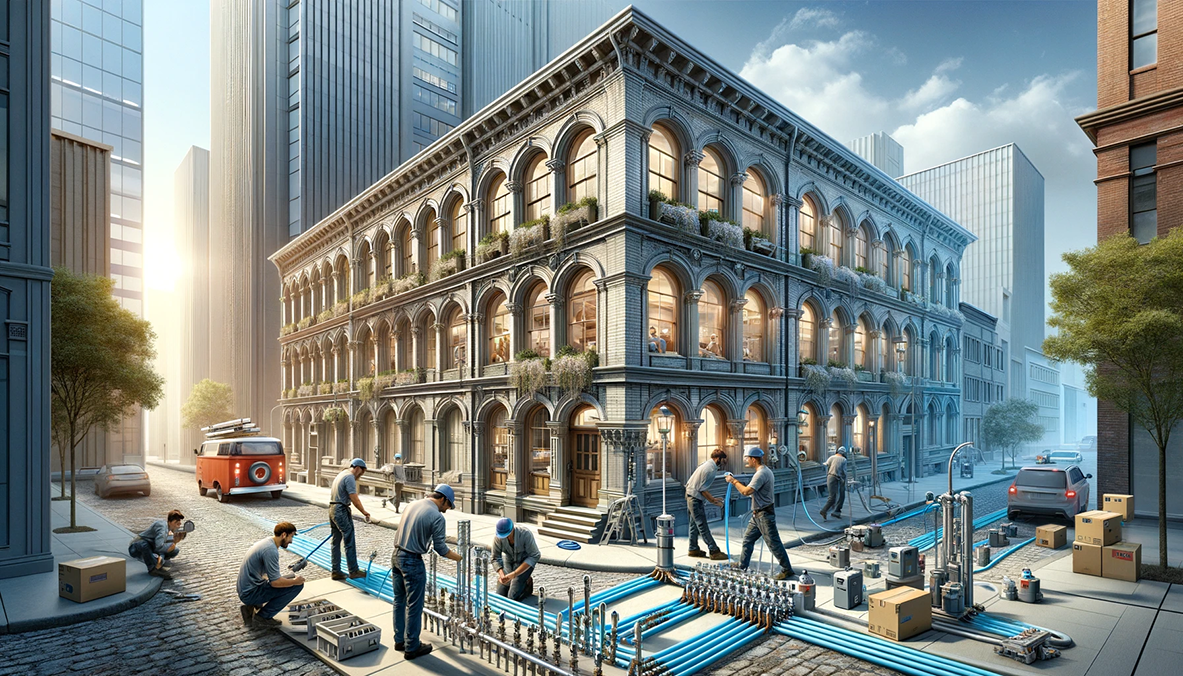Retrofitting Older Buildings for Water Submetering
Introduction
In an era where sustainability and efficiency are paramount, retrofitting older buildings with water submetering systems has become a vital strategy for various property stakeholders. This approach extends beyond simple utility cost management, contributing also to operational efficiency and environmental stewardship. This document delves into the complexities, innovative solutions, and emerging trends in retrofitting older buildings with water submetering systems.
Understanding the Need for Water Submetering in Older Buildings
Water submetering is not only an environmental imperative but also an economic necessity. By monitoring end user’s water usage, you can promote individual accountability and realize a significant reduction in water waste and utility costs. This is vital as water scarcity becomes a pressing global issue. Regulatory requirements, such as California's SB 7 are driving the adoption of water submetering systems, reflecting a broader societal commitment to sustainable living.
The Challenges of Retrofitting for Water Submetering
Retrofitting older buildings presents various challenges, from regulatory compliance to the physical condition of the buildings themselves. Aging infrastructure may lead to potential issues during meter installation, necessitating a careful assessment of the existing plumbing systems. The tenant-landlord dynamics also introduce unique challenges, especially in the transfer of water costs on to the tenant. Integrating water submetering systems into these older structures often requires a tailored approach, blending traditional plumbing techniques with modern submetering technologies.
- Compatibility with Existing Infrastructure: Many older buildings have plumbing systems that may not align with modern submetering devices, requiring creative engineering solutions or significant modifications.
- Space Constraints: Finding space for water meters without disrupting aesthetics or structural integrity can be challenging, often necessitating a compact and modular design approach. Newer clamp-on meters, if rated for utility grade performance, are worth the extra cost.
- Preservation of Historical Integrity: Retrofitting heritage buildings must be done in a way that preserves historical integrity, limiting physical modifications.
- Electrical Integration: Upgrading electrical systems to support modern submetering systems can be complex and delicate.
- Data Integration and Management: Integrating data from submetering systems with existing property management systems requires a capable digital infrastructure.
- Custom Solutions for Varied Units: Tailoring submetering solutions to each unit's specific needs adds complexity.
- Compliance and Regulation: Navigating regulatory standards during retrofitting requires expert guidance.
- Aging Infrastructure and Incompatible Systems: Assessing and upgrading outdated plumbing systems to ensure compatibility with new technologies is essential.
- Electrical Challenges and Preserving Building Integrity: Addressing outdated electrical systems and installing new systems without altering the building's character are significant considerations.
Innovative Solutions and Best Practices
To overcome these challenges, innovative solutions and best practices have been developed:
- Modular and Wireless Submetering Technologies: Compact, efficient systems that can be easily integrated into existing plumbing, minimizing the need for extensive modifications.
- Automated Meter Reading (AMR) Systems: Streamlining the billing and consumption tracking process.
- Smart Submetering Systems: Providing real-time data and analytics for immediate insights into water consumption patterns.
- Tailored Solutions: Customizing submetering solutions to fit the unique requirements of each building and unit.
- Professional Assessments: Engaging with specialists in retrofitting older buildings for expert insights and effective installation methods.
- Technological Innovations: Utilizing wireless systems and compact, modular units for easier integration.
- Phased Implementation: Gradually installing submetering systems to minimize disruption and allow for adjustments.
- Collaboration with Conservation Specialists: Ensuring that retrofitting efforts in historic buildings are in line with preservation guidelines.
Tenant Engagement and Individual Billing
Engaging tenants and implementing individual billing are essential for promoting water conservation and efficient resource use. Modern submetering systems with user-friendly interfaces and accessible data enhance this process, encouraging responsible water usage.
The Future of Water Submetering in Retrofitting
The future of water submetering in retrofitting is shaped by trends like integration with building automation systems, MBUS connectivity, and the use of data analytics. Smart submetering systems with predictive analytics are becoming integral to water management in older buildings, adaptable to evolving standards.
Operational and Financial Implications
Adopting water submetering systems in older buildings enhances operational efficiency and offers financial benefits, including reduced water consumption, cost savings and the opportunity for fund reallocation towards maintenance and renovation.
Environmental and Social Considerations
Water submetering plays a crucial role in conserving vital natural resources and contributes to broader environmental goals. Growing community and regulatory support reflect increased environmental awareness and the drive towards sustainable urban living.
Conclusion
Retrofitting older buildings with water submetering systems is a critical step towards sustainability and operational efficiency. By addressing challenges and leveraging innovative solutions, property owners can significantly contribute to responsible water resource management. Advancements in water submetering technology will continue to shape sustainable, efficient and cost-effective water management practices.
